Environmental factors influencing tree health and growth
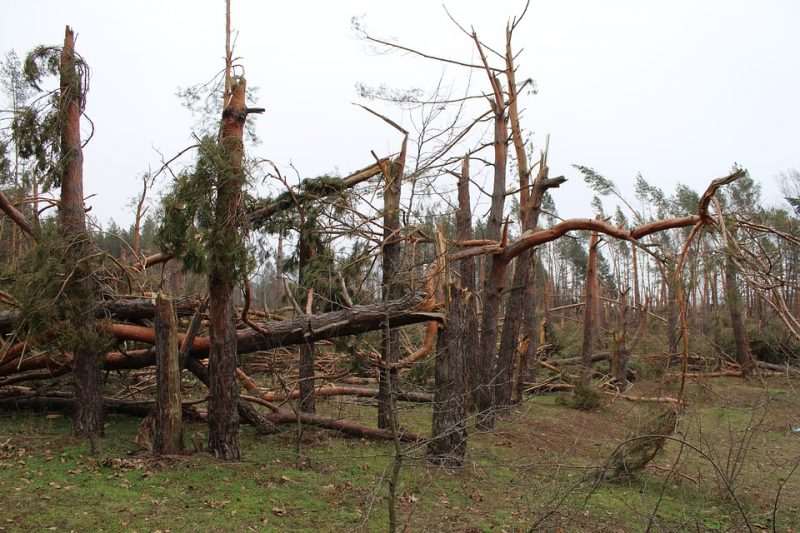
Environmental factors are of particular importance, their action directly influencing the growth and development of trees.
Wind, snow and ice
Windbreaks and windthrows
The action of the strong wind can have negative effects both in the forest stands and on isolated trees. Breakage of leaves, shoots, branches, parts of the crown or trunks, or uprooting of the whole tree can occur. The phenomenon can have the character of a storm, cyclone, hurricane, typhoon, or tornado, and can cause massive windbreaks or massive windthrows.
The intensity of the damage differs depending on several biotic and abiotic characteristics, such as tree species, wind intensity, different meteorological aspects, dimensional and mechanical characteristics of the trees and stands, other environmental factors, etc.
Snow and ice damages
The action of snow can cause crown damage, branch or stem breakage, bending of thin trees, or even uprooting. At high altitudes, with a consistent layer of snow, the avalanche phenomenon can occur, causing significant damage to the vegetation.
Usually, the most significant snow damage occurs in the spring. The most susceptible are the young conifer stands and those in which the specific forestry interventions (cleaning, thinning) were not conducted in time. In this case, the trees are slender (the number of trees per hectare is large, the diameters are small and the heights are high) and prone to bending, breaking, and uprooting.
Negative effects of wind, snow, and ice damages:
- economic point of view: losses and qualitative devaluation of woody material;
- ecological point of view: pest outbreaks, ecosystem disturbances, temporary damage to biodiversity, etc .;
- social point of view: impairment of the aesthetic values of the landscape, loss of the recreational effect, etc.



Prevention:
- avoiding the plantation of pure forest stands (especially spruce);
- promoting mixed stands (conifers and deciduous species);
- avoiding the introduction of tree species outside their natural habitat;
- choosing species resistant to falls and breakages (for artificial regeneration);
- extracting dry, broken, fallen, or infested trees;
- adapting the silvicultural interventions to the existing environmental conditions and to the degree of endangerment of the stands;
- carrying out the specific silvicultural interventions in time (cleaning-respacing, thinning, salvage cuttings, tending of forest edges, etc.).
Forest fires
Forest fires can start naturally or be generated by voluntary or involuntary human actions. Globally, millions of acres of vegetation burn annually. Many environmental factors play a role in the occurrence, scale, and expansion of forest fires: the climate, the presence of hot winds, the cultivated tree species, the applied forestry interventions, and other aspects.
Forest fire classification
Ground and underground fires: when the humus, peat, charcoal and the oily vegetation residues are burning, advancing by max. 1 km/h.
Surface fires: when the lichens, mosses, leaves, grasses, shrubs, seedlings, and the bark of the trees are burning, advancing by max. 2-3 km/h.
Crown fires: the litter, the trunks, and the crowns burn simultaneously, affecting completely the trees and advancing by 5 km/h or more.
Usually, the trunk, branches, and leaves (needles) of conifers burn better than those of the deciduous species. On the other hand, the dense and compacted litter made of conifer needles burns harder than the litter composed of the residues of deciduous species.
Prevention:
- promoting mixed stands (conifers and deciduous species);
- limiting the penetration of wind into the forest (by planting shrub species at the forest borders);
- creating wildfire safety strips (without vegetation);
- maintaining an optimal stand density by carrying out in time the specific silvicultural interventions;
- adapting the silvicultural interventions to the existing environmental conditions;
- extracting dry, broken, fallen, or infested trees.
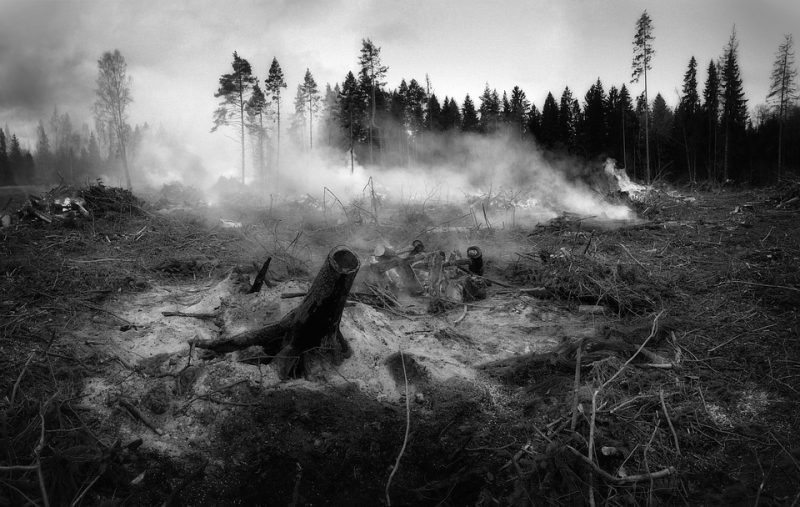

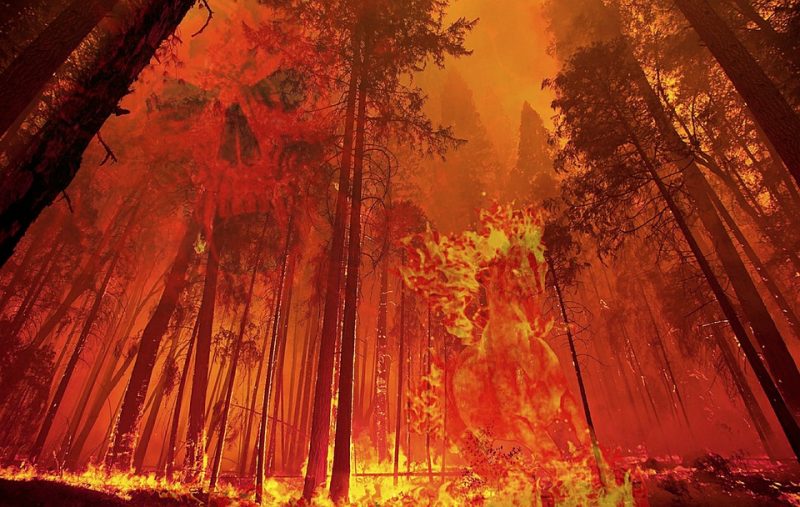
Moisture deficit or excess
Moisture in the soil and atmosphere is essential for the survival of trees and shrubs. The optimum humidity for each species is different. Some tree species require small amounts of water, while others grow well in conditions of high or very high humidity.
Lack of moisture prevents seed germination and causes drying of germinated seeds, saplings, and seedlings. The growth of trees and shrubs is slowed down or blocked, and their top dries out. If the situation persists, the affected plants may dry out.
Excess moisture in the soil causes asphyxiation and root rot. The occurrence and spread of soil pathogens is favored. Some species, such as bald cypress, alders, willows, American ash, and others, are resistant to high humidity or even stagnant water. Periodically, in order to prevent the development of soil pathogens, treatments with microorganism-based biological fungicides can be carried out.
Recommended products
-
You can find products on a different store
Change Store -
You can find products on a different store
Change Store -
You can find products on a different store
Change Store -
You can find products on a different store
Change Store -
You can find products on a different store
Change Store -
You can find products on a different store
Change Store -
You can find products on a different store
Change Store -
You can find products on a different store
Change Store -
You can find products on a different store
Change Store -
You can find products on a different store
Change Store -
You can find products on a different store
Change Store -
You can find products on a different store
Change Store -
You can find products on a different store
Change Store -
You can find products on a different store
Change Store -
You can find products on a different store
Change Store -
You can find products on a different store
Change Store -
You can find products on a different store
Change Store -
You can find products on a different store
Change Store -
You can find products on a different store
Change Store -
You can find products on a different store
Change Store -
You can find products on a different store
Change Store -
You can find products on a different store
Change Store -
You can find products on a different store
Change Store -
You can find products on a different store
Change Store
Prevention of water deficit in nurseries:
Prevention of excess water in nurseries:
- avoid planting in dry areas, especially species sensitive to lack of moisture (larch, pine, spruce, maple, beech, etc.);
- performing fall plowing;
- periodically loosening the soil;
- breaking up the soil crust;
- soil mulching;
- weed control;
- irrigation.
- avoid planting in areas with high humidity of species sensitive to excess humidity;
- choosing terraced land for nurseries;
- ensuring good soil drainage;
- breaking up the soil crust;
- create a system of water collecting ditches.
Lack or excess of light
Light is a key environmental factor, essential for the development of each process in the life of the trees and forests. Insufficient light blocks the development of the leaves, causing abnormal elongation of the shoots and, finally, the death of the plants.
The negative effect of excess light occurs in the case of trees that grow in shaded conditions, and which are suddenly exposed to direct sunlight. Shade-tolerant species (eg. beech, fir, yew, etc.) are usually shaded in the nurseries, after which they are gradually exposed to light before planting is carried out.
Extreme temperatures
The average temperature is a characteristic environmental factor, taken into consideration when the forest species composition is established for a regeneration area. Still, extreme temperatures are the limiting factors. These can affect some tree and shrub species, depending on their adaptability and resistance. Some pine species, for example, withstand conditions of -60℃, while other tropical species can resist temperatures above 40℃.
Extreme temperatures can cause:
- Heat damage caused to seedlings and young plants;
- Leaf, shoot or bark burn;
- Frost damage caused to the tips of non-lignified seedlings (early frost – autumn);
- Drying of softwood seedlings (frost on the ground without snow);
- Frost damage of buds, leaves, flowers, fruits (late frost – spring);
- Frost damage of softwood needles (dry frost);
- Stem cracking (dry frost);
- Injury caused to seedlings by frost-thaw alternation.
Prevention in nurseries:
- Damage caused by high temperatures:
- placement of nurseries on shady slopes;
- sowing seeds in early spring.
- Damage caused by frost:
- avoid the placement of nurseries in deep valleys;
- choosing species adapted to low temperatures;
- covering the seedlings for the cold autumn and spring nights.

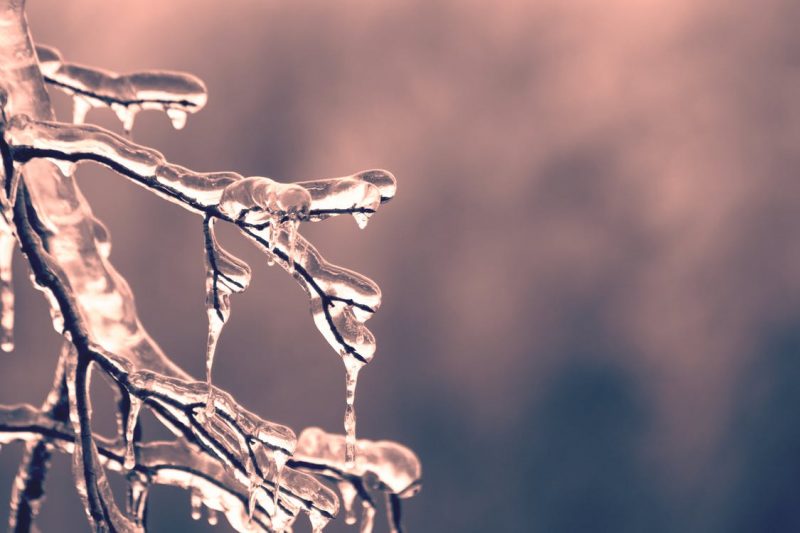
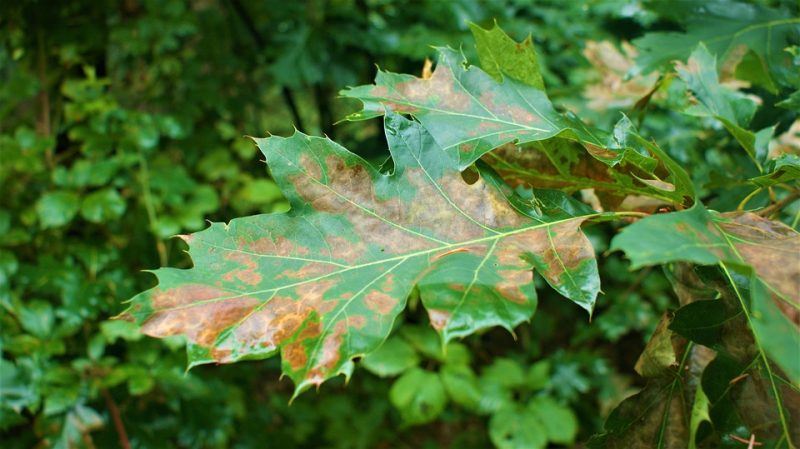
Recommended products
-
You can find products on a different store
Change Store -
You can find products on a different store
Change Store -
You can find products on a different store
Change Store -
You can find products on a different store
Change Store -
You can find products on a different store
Change Store -
You can find products on a different store
Change Store -
You can find products on a different store
Change Store -
You can find products on a different store
Change Store -
You can find products on a different store
Change Store -
You can find products on a different store
Change Store -
You can find products on a different store
Change Store -
You can find products on a different store
Change Store -
You can find products on a different store
Change Store -
You can find products on a different store
Change Store -
You can find products on a different store
Change Store -
You can find products on a different store
Change Store -
You can find products on a different store
Change Store -
You can find products on a different store
Change Store -
You can find products on a different store
Change Store -
You can find products on a different store
Change Store -
You can find products on a different store
Change Store -
You can find products on a different store
Change Store -
You can find products on a different store
Change Store -
You can find products on a different store
Change Store
Pollution
Trees respond to air, soil, and water pollution by slowing down or stopping physiological processes and reducing annual growth. In some cases, trees become weakened or even dry out. In addition, due to the stress caused by pollution, the trees become prone to damage caused by pests, pathogens, wind, fire, or other factors.
Sulfur dioxide from the atmosphere often causes the leaves to dry out and fall off. At the same time, it stimulates the occurrence and spread of powdery mildew.
Dust particles and industrial dust deposited on the leaves slow down or block the physiological processes of the trees. The deposited solid suspensions can be cemented, thus decreasing (by extra weight) the strength and mechanical stability of the trees.
Acid rain, with harmful effects on vegetation, is based on large amounts of nitrogen oxides and sulfur oxides in the atmosphere. The soil and water become acidic due to acid rain, causing the death of fine roots.
Other pollutants that cause vigor loss of trees are ozone, liquid oxygen, oxides, sulfates, and others.
Prevention:
- avoid planting pollution-sensitive species in the exposed areas;
- application of specific treatments to normalize soil acidity;
- neutralization and purification of pollutants;
- interruption of gas emissions as much as possible.




















































































































































































































































































































































































































































